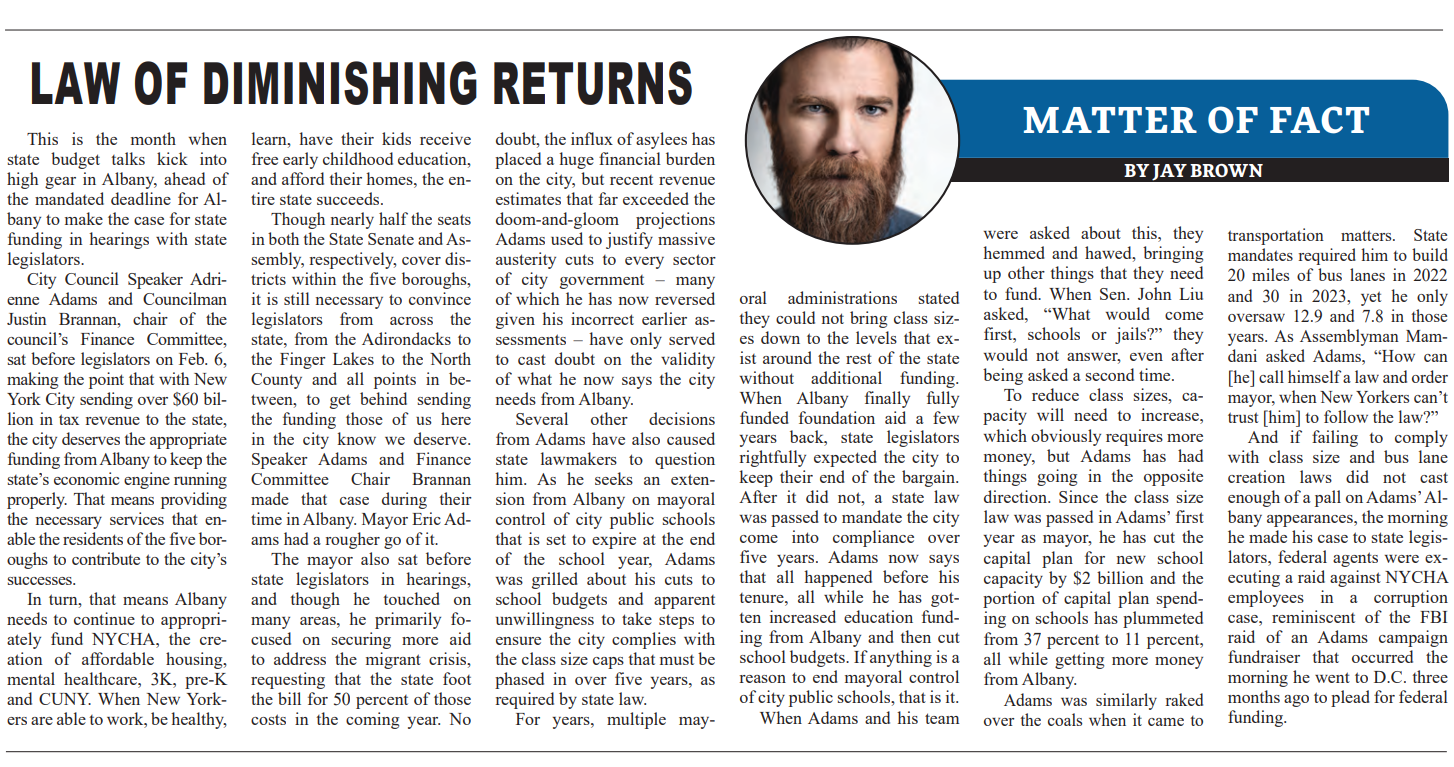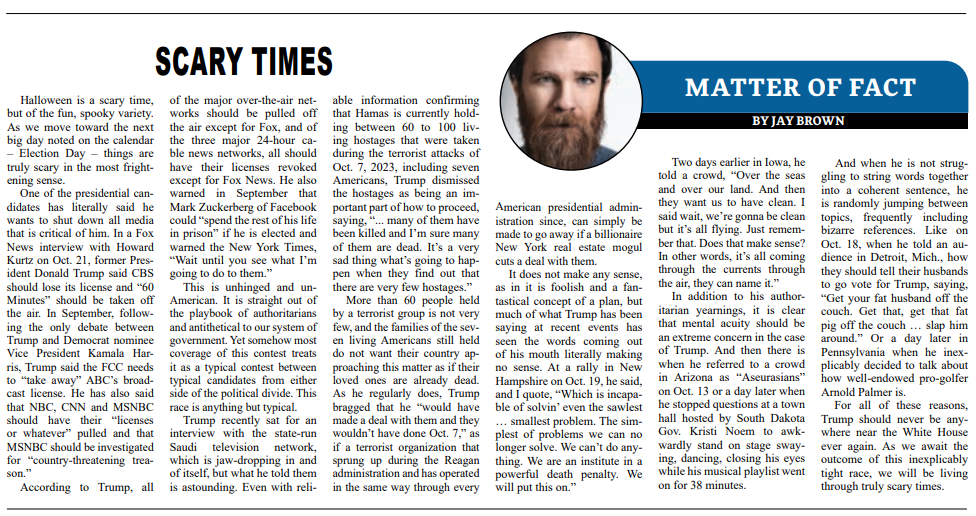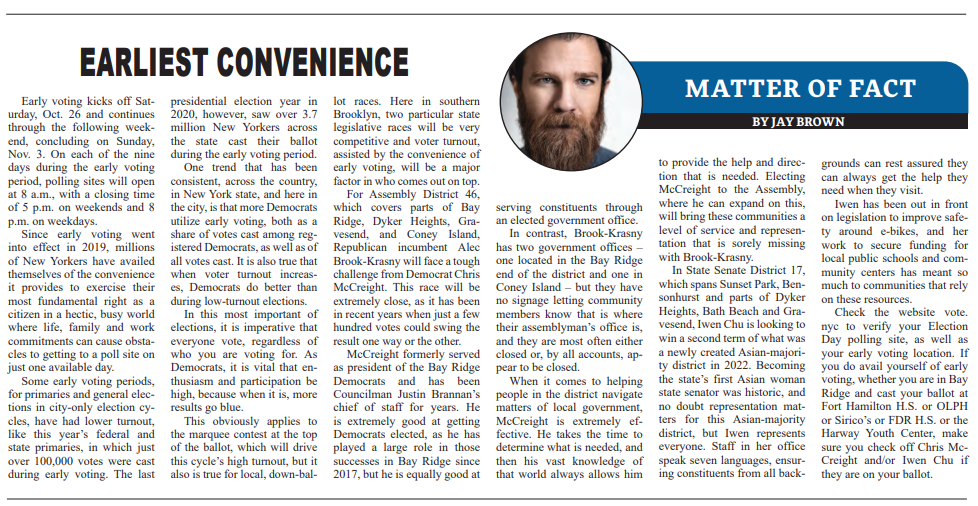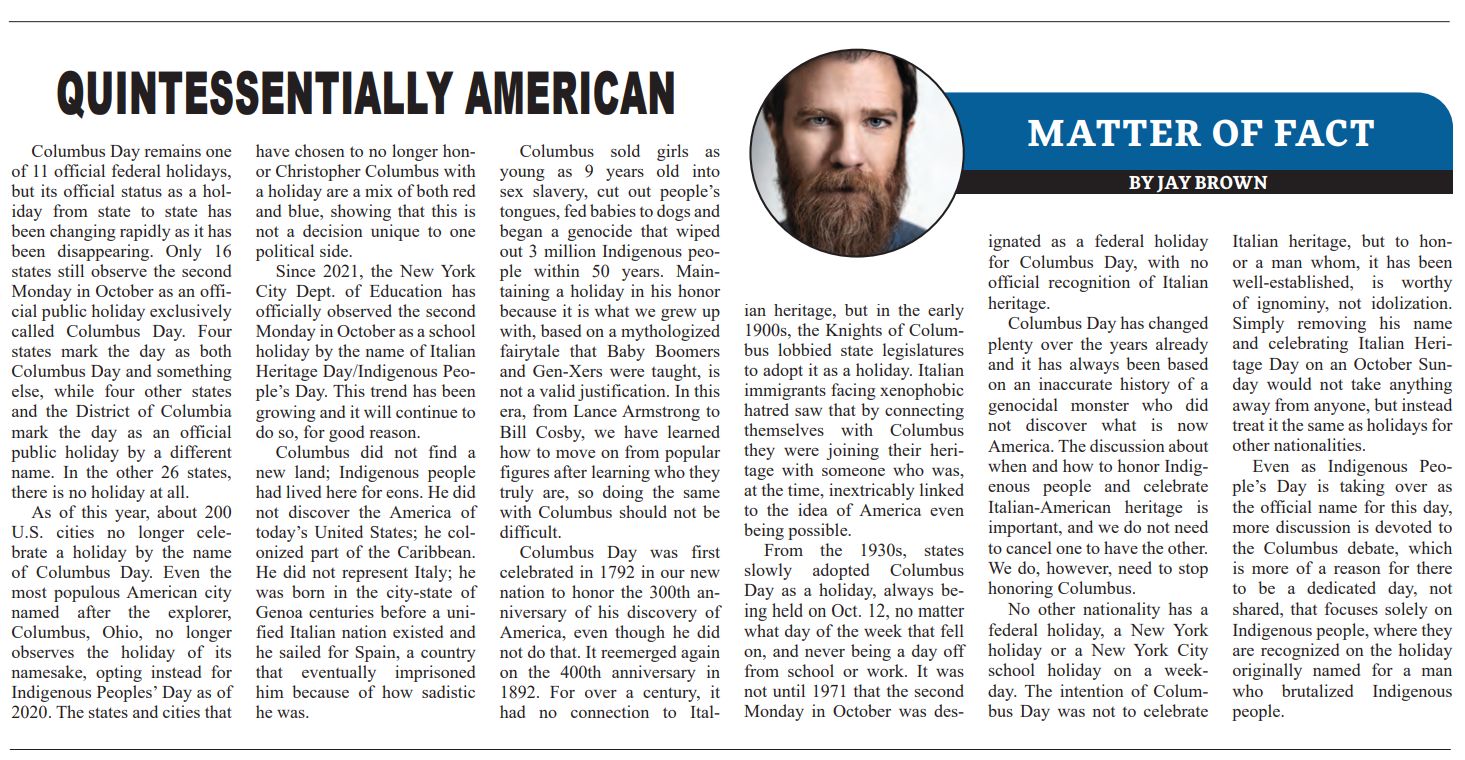This column, from the weekly opinion piece MATTER OF FACT, first appeared on BrooklynReporter.com, the Home Reporter and Spectator dated February 16, 2024
This is the month when state budget talks kick into high gear in Albany, ahead of the mandated deadline for Albany to make their case for state funding in hearings with state legislators.
City Council Speaker Adrienne Adams and Councilman Justin Brannan, chair of the council’s finance committee, sat before legislators on February 6, making the point that with New York City sending over $60 billion in tax revenue to the state, the city deserves the appropriate funding from Albany to keep the state’s economic engine running properly. That means providing the necessary services that enable the residents of the five boroughs to contribute to the city’s successes.
In turn, that means Albany needs to continue to appropriately fund NYCHA, the creation of affordable housing, mental healthcare, 3K, Pre-K, and CUNY. When New Yorkers are able to work, be healthy, learn, have their kids receive free early childhood education, and afford their homes, the entire state succeeds.
Though nearly half the seats in both the state senate and assembly, respectively, cover districts within the five boroughs, it is still necessary to convince legislators from across the state, from the Adirondacks to the Finger lakes to the North County and all points in between, to get behind sending the funding those of us here in the city know we deserve. Speaker Adams and Finance Committee Chair Brannan made that case during their time in Albany. Mayor Adams had a rougher go of it.
The mayor also sat before state legislators in hearings, and though he touched on many areas, he primarily focused on securing more aid to address the migrant crisis, requesting that the state foot the bill for 50 percent of those costs in the coming year. No doubt, the influx of asylees has placed a huge financial burden on the city, but recent revenue estimates that far exceeded the doom-and-gloom projections Adams used to justify massive austerity cuts to every sector of city government – many of which he has now reversed given his incorrect earlier assessments – have only served to cast doubt on the validity of what he now says the city needs from Albany.
Several other decisions from Adams have also caused state lawmakers to question him. As he seeks an extension from Albany on mayoral control of city public schools that is set to expire at the end of the school year, Adams was grilled about his cuts to school budgets and apparent unwillingness to take steps to ensure the city complies with the class size caps that must be phased in over five years, as required by state law.
For years, multiple mayoral administrations stated they could not bring class sizes down to the levels that exist around the rest of the state without additional funding. When Albany finally fully funded foundation aid a few years back, state legislators rightfully expected the city to keep their end of the bargain. After it did not, a state law was passed to mandate the city come into compliance over five years. Adams now says that all happened before his tenure, all while he has gotten increased education funding from Albany and then cut school budgets. If anything is a reason to end mayoral control of city public schools, that is it.
When Adams and his team were asked about this, they hemmed and hawed, bringing up other things that they need to fund. When Senator John Liu asked, “What would come first, schools or jails?” they would not answer, even after being asked a second time.
To reduce class sizes, capacity will need to increase, which obviously requires more money, but Adams has had things going in the opposite direction. Since the class size law was passed in Adams’ first year as mayor, he has cut the capital plan for new school capacity by $2 billion and the portion of capital plan spending on schools has plummeted from 37 percent to 11 percent, all while getting more money from Albany.
Adams was similarly raked over the coals when it came to transportation matters. State mandates required him to build 20 miles of bus lanes in 2022 and 30 in 2023, yet he only oversaw 12.9 and 7.8 in those years. As Assemblyman Mamdani asked Adams, “How can [he] call himself a law and order mayor, when New Yorkers can’t trust [him] to follow the law?”
And if failing to comply with class size and bus lane creation laws did not cast enough of a pall on Adams’ Albany appearances, the morning he made his case to state legislators, federal agents were executing a raid against NYCHA employees in a corruption case, reminiscent of the FBI raid of an Adams campaign fundraiser that occurred the morning he went to D.C. three months ago to plead for federal funding.




